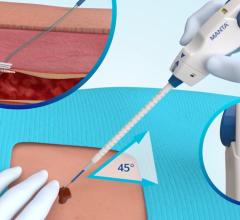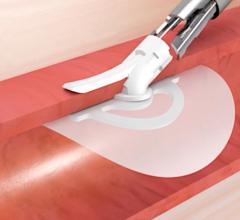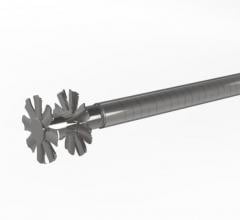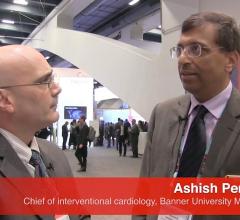
St. Jude's AngioSeal
The modern world of medicine has been revolutionized by the inception of minimally invasive interventional techniques. Vascular closure device (VCD) technology is a relatively new technology that has drafted new vistas to drive interventional surgery a step further.
Physicians' awareness and willingness to use new technology plays a vital role in the success of a device. Advances in the field of catheter-based cardiovascular treatments address the need for optimum vascular access hemostasis.
Access site complications after percutaneous interventions have a significant impact on the overall efficiency of the interventional procedure. The femoral artery is considered the most common access site for vascular access. On completion of the interventional procedure, the arterial puncture site becomes host to a number of potential problems such as bleeding, hematoma and pseudoaneurysm. These complications are associated with patient discomfort, longer hospitalization, increased medication and, if not treated appropriately, vascular surgery. It is the occurrence of these complications that calls for an effective approach to achieving hemostasis.
Propelled by technological innovations, VCDs hold significant promise in providing patients access to better interventional procedures and, hence, a better quality of life. Prior to the inception of vascular closure devices, manual and mechanical compression techniques were applied to facilitate vascular access hemostasis. However, these approaches came with certain disadvantages, such as delayed time to ambulation, increased usage of hospital resources, patient discomfort and lengthy immobilization. The introduction of vascular closure devices in the early 1990s has created a new dimension to achieving hemostasis at the access site. A number of factors have propelled the growth of vascular closure devices. It was estimated that in 2005 about 5.2 million cardiac catheterization procedures were performed, of which 45 percent used VCDs. The spiraling increase in the number of interventional procedures has a direct impact on the usage of VCDs.
Adding to this are the significant clinical benefits such as increased patient satisfaction, early ambulation and decreased hospital resource utilization. There have been numerous technological innovations that have encouraged VCDs to become one of the fastest growing segments in the field of interventional medicine.
When it Gets Complicated
Despite the fact that VCDs are being used extensively, they are also associated with some incidences of bleeding and vascular complications. Other complications related to this procedure include hematoma, retroperitoneal bleeding, pseudoaneurysm, late bleeding and occasionally, death.
The incidence of infection and other complications linked with the implementation of vascular closure devices cast doubt on the efficiency and safety of the device. Minor complications like hematoma, bleeding and pseudoaneurysm occur in less than or close to 7.2 percent of cases in which a VCD is used, and three percent of VCD cases are associated with major complications. The critical factors that promote infection are hematoma formation at the access site and the presence to address the complications associated with the access site. These have sometimes contributed to increased costs and in rare cases, mortality.
In the Market
Three major categories of vascular closure technologies are available in the market today:
• Collagen-mediated closure — in these devices collagen forms the active component that triggers hemostasis at the arterial puncture site. This type of device calls for placement of a foreign material such as collagen into the body.
• Suture-mediated closure — this category of devices facilitates hemostasis by means of surgical closure of the femoral artery puncture site. A salient feature of these devices is that they focus on reducing trauma to surrounding tissue.
• Mechanical or clip-based closure — this segment of vascular closure devices employs mechanical closure of the access site using clips or staples to achieve hemostasis.
The benefits associated with vascular closure devices include reduced need for manual compression at the puncture site and meliorated patient comfort coupled with early ambulation. These advantages have accelerated the acceptance and usage of these devices on a fairly large scale.
Training is Essential
An unavoidable necessity of these devices is that they require physicians to be trained in using them. This is because every device on the market has its own deployment mechanism. As a result, most of the devices are associated with mandatory training programs that involve assessment and proctoring of physicians.
The focus of these training sessions is to provide physicians with an insight to both the technical and anatomical intricacies involved when using the device. Providing hands-on experience to physicians in an attempt to avoid poor or faulty device deployment techniques ensures efficient use of the device and better clinical outcomes. Since current vascular closure devices are complex and require steep learning curves by physicians, manufacturers are proactively upgrading their products to improve product performance and acceptance by the medical community.
Like every new medical device or technology, the success of vascular closure devices is dictated largely by the outcome of clinical trials. Because VCDs are still an emerging segment, there is a knowledge gap pertaining to the short- and long-term effects that are associated with the procedures.
Recent studies have reported the incidence of certain unusual infectious complications related to the use of the devices. Complications associated with increased morbidity call for multiple surgical débridement, prolonged hospitalization and administration of antibiotics. Manufacturers are facing the challenge of providing an improvised solution that would overcome or minimize these complications.
Recognizing the immense potential these devices have in the medical devices industry, a number of companies have ventured into developing novel technologies to ensure optimum hemostasis.
Despite the prominent domination of leaders such as St. Jude Medical and Abbott Laboratories in the VCD market, emerging companies through significant entrepreneurial abilities have been able to create a niche for themselves. The Boomerang Wire System, a novel VCD developed and introduced by Cardiva Inc., is indeed a paradigm of such entrepreneurial ability. As an emerging company, Cardiva holds significant promise with its unique product that uses the novel Arteriotomy Site-Specific Compression technology, which enables effective management of the access site.
Developments of advanced techniques have encouraged VCDs to be one of the fastest growing segments within the interventional medical field. While emerging companies are trying hard to establish themselves in the market, mid-tier players such as Datascope Corp. portray a different scenario. Realizing the difficulty involved in managing the escalating level of expenses and the need for additional investments, they have decided to exit the VCD business. The pressing demand to upgrade existing products and to develop innovative technologies presents a
significant pressure on such mid-tier companies.
Currently St. Jude Medical, with its Angio-Seal range of devices, is the market leader followed by Abbott Laboratories with the StarClose vascular closure system. While existing manufacturers are striving hard to hold on to their existing market positions, new competitors have found their way into this market. Each product, unique in its technology, has to have a strong performance profile to
sustain in this highly competitive market.
A noteworthy example of an emerging competitor is Sutura Inc, who
contributes to the VCD market with its SuperStitch technology. Marked by technological innovation, the “As Simple As 1-2-3” concept introduced in the operation for the SuperStitch simplifies device deployment and also eliminates the need for collagen to close the puncture site.
Although there is a constant demand for new technology, it continues to face the threat of acceptance by physicians. In order to endure in this competitive market, manufacturers will need to make considerable investments in research and developments, clinical trials and education of physicians to constantly bring about improvements in their products that will ensure adoption and longevity in the market.


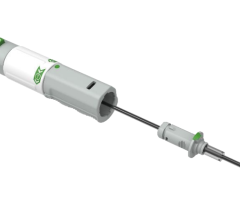
 April 16, 2024
April 16, 2024 

